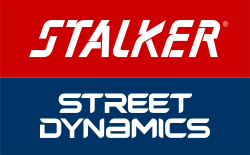Symposium on Traffic Safety June 2-6, 2024
Crash Investigation & Reconstruction Breakout Sessions
We have assembled a fantastic lineup for the 2024 Symposium on Traffic Safety! The confirmed crash-related breakout sessions and speakers are listed below. Session categories include Advanced Investigative Techniques, Crash Testing, EDR/New Technology, and Human Factors. Please note that due to circumstances beyond our control, sessions and presenters may change. Learn more about the Symposium on Traffic Safety.
Advanced Investigative Techniques
-
Deadly Distractions: A Case Study of the Fatal 2018 Uber Autonomous Vehicle Crash (Kasey Marsland)
- Detective Kasey Marsland, Tempe (AZ) Police Department
In this session, we will delve into the challenges and hurdles faced during the investigation of the world's first fatal collision between a fully autonomous vehicle and a pedestrian. We will take a closer look at the techniques used for investigation and the data collected during the process. The investigative strategies that we will discuss include visibility studies, evaluation by lighting experts, analysis of EDR (Event Data Recorder), skid testing, video analysis, cell phone data analysis, and many others.
-
Dispelling the Other "Expert" (Greg Sullenberger)
Greg Sullenberger, Vector Collision Analysis
This presentation aims to help you find any errors or inaccuracies in the defense expert report and expose them to strengthen your case. Greg Sullenberger will demonstrate how to identify and illustrate the errors or mistruths in the opposing expert's report using real cases and their expert reports.
-
Air Brakes: Drum to Disc (Walt Dobson)
- Walter Dobson, IPTM Adjunct Instructor
The session will present an overview of the air system and then move into the foundation brakes, drum and disc. Issues with Disc brakes as well as the collection of data to calculate brake forces will be presented.
-
Fire Investigations for Police Officers (Jay Vitagliano)
- Jay Vitagliano, ACTAR, CFI, CFEI, A.B. Moore Forensic Engineering, Inc.
In this session, we will discuss what happens after a fire has been extinguished and the area has been cleared. We will explore how the actions of police officers at the scene can impact the outcome of investigations. We will review case studies of various fire scenes, including those involving electric vehicles, and we will look at the special considerations that must be taken into account in such situations. Additionally, we will discuss the recovery of Event Data Recorders (EDRs) and the survivability of burned vehicles.
-
Motorcycle Crash Investigation Update (Al Baxter)
- Al Baxter, Suncoast Collision Analysis, IPTM Adjunct
This session is intended for investigators and reconstructionists who previously attended an IPTM Investigation of Motorcycle Crashes course more than five years ago. Al Baxter will share important updates on new motorcycle technology, rider data and measurements, motorcycle brake systems and performance results. It will also cover airborne, swerving, and wheelbase data, as well as the results of the recent Federal Highway Administration crash study.
-
Notes on the Stability of RV, Utility, and Boat Trailers (John Daily)
- John Daily, MSME, Jackson Hole Scientific Investigations, IPTM Adjunct
Vehicles such as cars, vans, and pickups are often seen on highways pulling trailers and sometimes get into accidents. These crashes can involve a single vehicle or collisions with other vehicles. In either case, it is up to the Reconstructionists to determine the cause of the crash. In such scenarios, it is essential to determine whether the combination unit was stable or unstable when the crash occurred. This presentation aims to help Reconstructionists assess the system's stability so that they can carry out a more thorough investigation. A case study will be presented as an example.
-
Patrol Vehicle Positioning Crash Test Study (Greg Sullenberger & Roman Mikulec)
- Greg Sullenberger, Vector Collision Analysis
- Roman Mikulec, ResearcherIn 2003, a paper was published by SAE that suggested ways to position a patrol vehicle during a traffic stop to ensure the officer's safety. The study relied on computer simulations and one actual crash test. A newer study, using modern police vehicles, has now been conducted to validate or invalidate the 2003 study and update it. The new study includes numerous computer simulations and actual crash tests. The results of the study will be presented, which include multiple crash tests and simulations of three-vehicle crashes where the bullet vehicle strikes the rear of the patrol vehicle positioned behind the violator vehicle.
-
Tires...What You Don't Know (T.J. Tennent)
- T.J. Tennent, Tennent, Winkelman and Associates
Understanding a tire’s language can give you the advantage needed to determine the success or failure during an investigation. The tire(s) are important to a crash, whether they have become disabled or not. It is your job to not only understand the language that the tire is speaking but be able to translate it so that everyone understands what it is telling you.
-
The Physics behind the Momentum Equations using Vector Graphics and Matrix Methods in Crash Reconstruction (Jose Granda)
- Jose J. Granda, Ph.D., Professor Mechanical Engineering, California State University, Sacramento
Momentum equations have the objective of finding six variables of interest. Two impact velocities, Delta-V values and PDOF (Principal Direction of Force) angles of both vehicles. The usual practical approach is solving the equations for these variables of interest in algebraic form setting the reference axis to coincide with one of the vehicles. This presentation explores two other methods to solve this fundamental problem without the need to assign the zero-reference axis along the direction of one of the vehicles. It explores the use of vector graphics to solve the six variables of interest without performing numerical calculations, without using a computer or using a calculator but only vector operations. How can that be? The answer is in the geometrical properties that momentum vector graphics permit. The idea is to gain insight into the physics of the collision and what we can learn from the momentum and velocity diagrams. It will present how to draw and read the results using basic drafting tools and how to verify it using PowerPoint without any calculations.
-
Truck Rollovers: Some Interesting Insights (Frank Navin)
- Frank Navin, Professor Emeritus, University of British Columbia
This presentation is aimed towards reconstructionists who are looking to learn how to deal with off-centered loads in vehicles like tractor-trailers and tricycle vehicles (such as tuk tuks) for suspended and superelevated loads. The analysis is supported by data from the author's rollover experiments of two tractor-trailers and detailed other data. The author presents a hypothetical analysis of the video of the September 2008 rollover collision at Donner Pass, CA to explain the lateral acceleration of the vehicle. This reconstruction demonstrates the power of the new formulation to study a high-speed collision with incomplete data. The importance of the equation's variables is shown by calculations which support the suggested truck reconstruction rules derived by the author from previous experiments.
-
What Engineers Know About Crash Reconstruction That You Should Know Too (Andrew Rich)
- Andrew Rich, BSME, ACTAR, ASE, Rich Consulting LLC
A significant part of crash analysis and reconstruction involves applying general physics concepts to a specific situation. In this presentation, we will discuss some of the physics and mathematical principles related to crash reconstruction that both engineers and non-engineers should be aware of.
Crash Testing
-
Non-Traditional Pedestrian Strike Crash Testing
Steven Carbajal, IPTM's Symposium Crash Team Coordinator, will lead IPTM’s team of renowned crash reconstructionists as they conduct nine non-traditional pedestrian strike crash tests, gather, and analyze the data. Carbajal will present an in-depth review of the data and their analysis of each crash in two identical breakout sessions on Thursday at 8-9:30 a.m. and 10-11:30 a.m. Full test data will be available after the conference.
-
Post-Crash Data Analysis and Review (Steven Carbajal)
- Steven Carbajal, IPTM's Arizona Class Coordinator, Pedestrian and Bicycle Crash Course Coordinator
Our team of reconstructionists will present an in-depth analysis on the nine crash tests conducted on Monday afternoon. The purpose of the testing was to generate useful information on the non-traditional pedestrian crash tests. IPTM has conducted and recording thousands of traditional pedestrian crashes over the years. During this session we will analyze the crash tests conducted this week and compare them to traditional pedestrian crashes. The overall goal is to add tools to your toolbox when you are faced with investigating a non-traditional pedestrian crash.
EDR/New Technology
-
Back to Basics on Field Data Collection (Mike Flamm)
Mike Flamm, Law Enforcement Specialist, Delta V. Innovations Inc.
During this session, we will be discussing the importance of planning and reviewing the basic tools used for crash scene investigations. With law enforcement staffing levels decreasing and vehicle investigations becoming more complex, it is crucial to recognize the most effective methods of identifying, collecting, and analyzing data. We will cover topics such as advanced planning options, the needs vs. wants for technology, simplifying scenes, and time management. The question we must ask ourselves is whether we can walk away from complex workflows and technologies. Investigators from all areas recognize that crash scene processing is constantly changing and becoming more difficult to handle financially and chronologically. It is essential to discuss new ideas and strategies to manage these issues, which will benefit everyone involved in the investigative process.
-
EDR in Traffic Crash Reconstruction Update (Hamed Sadrnia)
- Hamed Sadrnia, Engineering Consultant, Timothy D. Brown & Associates
This session is a must for anyone interested in the latest EDR news. Hamed Sadrnia will review the current state of EDR in traffic crash reconstruction and changes since the last symposium that affect access, coverage, and analysis. Following a general overview, manufacturer-specific updates will be shared, as well as information on CDR2.
-
Investigating and Supplementing EDR Data with 3D Simulation (Brian McHenry & Stanley McHenry)
- Brian McHenry and Stanley McHenry, McHenry Software
Event Data Recorders (EDRs) are a valuable asset to enhance crash reconstruction. However, it's important to note that EDRs are not completely reliable, and anomalies may occur. Therefore, it is crucial to double-check all information provided by an EDR. One of the ways to ensure the accuracy of EDR data is by using a 3D simulation program. Using their crash investigations, the McHenrys will highlight significant issues that should be considered and addressed when reconstructing a crash using data from one or more EDRs. Ultimately, EDRs only provide part of the reconstruction story and serve as additional information to supplement a thorough crash investigation and reconstruction.
-
Vehicle System Forensics - When Cars Talk (Wesley Vandiver)
- Wesley Vandiver, Berla Corporation
Vehicle data can be acquired by investigators and serve as key evidence in their cases. Modern vehicles contain numerous electronic control units (ECUs) from which data can be acquired. Wesley Vandiver will examine various acquisition methods and available data elements, which may include historical geolocation data, vehicle speeds, user information, connected devices, vehicle events, vehicle configuration data, etc. He will share information from real-world uses of these data, including cases in which the data has been admitted at trial.
Human Factors
-
Human Factors and the Advent of Autonomous Vehicles (Swaroop Dinakar)
- Swaroop Dinakar, Managing Scientist in Human Factors, Driver Research Institute
This presentation delves into how drivers are adapting to the increasing automation in autonomous vehicles, examines their responses and the effectiveness of these systems. The session offers an insightful analysis of when automation aids driving and when it falls short, shaping our understanding of the future of driving.
-
Nighttime Driver Recognition: Unveiling the 2024 CAPLETS Approach (Jeff Muttart)
- Jeff Muttart, Ph.D., Driver Research Institute
This presentation will explore how an investigator's prior knowledge of a crash site and its hazards can inadvertently introduce bias unless a systematic approach is used. We will delve into the seven key factors affecting object recognition against backgrounds, summarized by the acronym CAPLETS: Contrast, Anticipation, Pattern, Lighting, Eccentricity, Time of Exposure, and Size. Our research has mathematically accounted for these elements to establish an objective recognition threshold and expands upon our presentation given last year. You will be guided through step-by-step procedure to correctly assess these factors, particularly in the context of analyzing driver responses during nighttime conditions. The session aims to equip attendees with the tools to make unbiased evaluations in crash investigations.
-
Occupant Kinematics and Injury Mechanisms During Traffic Collisions (Toby Gloekler)
- Toby Gloekler, P.E., ACTAR, Collision Reconstruction Engineers, Inc., IPTM Adjunct
The session will focus on studying occupant movements and interactions with vehicle interior components and safety systems during collisions. The analyses will include non-contact inertial and mechanical impact injury mechanisms based on injury and vehicle damage mapping. The role of vehicle collision speed, principal direction of force, speed change, and acceleration will be reviewed. To visualize their effect, case studies and computer simulation models will be used. This seminar is open to crash investigators irrespective of their level of experience.
-
Topics in Forensic Visibility (Leslie Weintraub)
- Dr. Leslie Weintraub, Board Certified Medical Optometrist, Expert Witness and Case Consultant
Vision, visibility, and conspicuity in relation to driving motorized vehicles, crash reconstruction, and the law will be discussed in this session. This will include topics such as the visual system, dynamic visual acuity, contrast sensitivity, and fallacies of photos. Furthermore, we will cover night versus daytime vision, and aspects of glare. To help illustrate these concepts, we will look at some examples, including a train crash scenario. Additionally, we will discuss common car and bicycle crash scenarios in terms of detection, identification, decision making, and reaction.
Location & Lodging
DoubleTree by Hilton
At the Entrance to Universal Orlando
5780 Major Boulevard
Orlando, Florida 32819
PH: (800) 222-8733
PH: (407) 351-1000
Rate: $140 + tax
Group rate expires May 17, 2024
Parking: $12 per day
SCAM ALERT:
We have not contracted with anyone to make discounted hotel reservations. Emails from Conventioneers, LLC or other organizations should be considered fraudulent. Reservations should be made as directed above.Registration Fee
$795
Our 2024 Exhibitors
Premium
- Carlson Software (P5)
- Kustom Signals (P1)
- RIEGL USA (P6)
- Stalker Radar (P4)
- Trimble Inc. (P3)
- IPTM Cop Shop
Deluxe
- CARFAX for Police (D8)
- CMI, Inc. (D5)
- Collision & Crime Forensic Solutions (D6)
- Lightpoint Data (D3)
- Driver Research Institute (D1)
- Virtual CRASH (D4)
Standard
- 4N6XPRT Systems (B1)
- ACTAR (B4)
- Altumint (A9)
- Amped Software (A8)
- Barrier By Design (B8)
- Berla (A10)
- Decatur Electronics (B13)
- FARO Technologies, Inc. (B11)
- Federal Signal (B12)
- Florida Drug Recognition Expert (DRE) Program (A2)
- Florida Law Enforcement Liaison Program (A3)
- Forensic Mapping Solutions, Inc. (B15)
- Intoximeters (A5)
- Lawyers and Judges Publishing (B7)
- Laser Tech (B5)
- Lifeloc Technologies (B14)
- MPH Industries (A6)
- NMS Labs (A11)
- NovoaGlobal, Inc. (A15)
- Sensys Gatso Group (A14)



